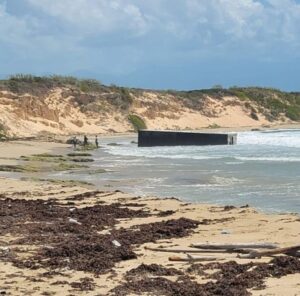
Sterling Investments betting on rate cuts
Listed investment company Sterling Investments Limited (SIL) is betting on lower interest rates to not only reverse some of the unrealised losses on its books, but also boost the value of its investment portfolio as well.
Sterling Investments is an investment company that primarily invests money into high-quality fixed income securities denominated in United States dollars (USD). This allows for it to derive interest income from these investments, capital gains when the value of these assets increase and foreign exchange gains since the company’s financials are reported in Jamaican dollars (JMD). Its investment portfolio is managed on its behalf by Sterling Asset Management Limited, its investment manager.
However, the good fortunes that benefited Sterling Investments prior to 2022 were erased as interest rates rose quickly and asset values fell. This saw the company’s total assets of $2.28 billion at the end of 2021 dip to $1.82 billion by the end of 2023, a decline which was largely due to the drop in its fixed income assets.
Since most of Sterling Investments’ assets are usually held to maturity, most of the changes in asset prices are reflected through a line item called the fair value reserve under its shareholder’s equity. That figure moved from a positive $73.50 million in 2021 to a negative $175.62 million by the end of 2023, a decline which represents over $200 million in fair value losses over the last two years.
If the asset is still paying consistent interest income and the foreign exchange rate hasn’t significantly appreciated, why was there such a swing downwards in the asset values of the investment portfolio? When interest rates decline, the value of your existing fixed income instruments should increase in value as newer financial instruments tend to be issued at lower interest rates. That makes your existing fixed income instruments more attractive in the general marketplace.
However, the opposite occurs when interest rates increase. Why would I buy a bond or fixed income product that gives a six per cent return when interest rates have gone up to six per cent and newer securities are being issued at nine to 10 per cent? It would make more sense for an investor to purchase the newer financial instrument providing a higher interest rate than to purchase the existing fixed income instrument providing the lower interest rate. This results in the value of the existing fixed income assets being marked lower due to the lower market values of these same securities.
To illustrate this point, a 25 basis point increase (0.25 per cent) in interest rates was projected to have a $1.40 million decrease in the company’s profit and $19.71 million decline to equity as per the sensitivity analysis of the audited financial statements. However, if interest rates dropped by 25 basis points, there would be a $1.13 million increase in the company’s net profit and a $20.07 million increase in equity.
With the company taking such a hit from higher interest rates and believing that rates have peaked, it’s been rotating its portfolio to take advantage of the higher interest rate instruments in the market. In the first half of 2024, Sterling Investments sold $207.90 million of financial securities in its portfolio while acquiring $139.72 million in new financial securities with higher interest rates and higher current yields. A portion of the proceeds from the sale of assets was used to repay $84.63 million of the company’s margin loan facility which is a lending option where brokers allow clients to borrow against a portion of their investment portfolio held with them. Thus, when interest rates are reduced, the value of its higher interest rate portfolio will increase as well.
“Consistent with management’s outlook, asset prices have recovered from 2023 lows and future interest rate cuts are already being priced into the market. While these events have had both positive and negative impacts on the company’s current performance, it provides opportunities for the company to increase future earnings and value,” said Sterling Investments second quarter (April to June) report.
Although the company has rotated its portfolio assets, the full impact has yet to be fully reflected in its numbers. The first six months saw a 15 per cent decline in interest income to $61.75 million with the company’s foreign exchange gain cut by 58 per cent to $12.23 million.
While the reduced margin portfolio will mean reduced interest expense in the future, a rise in the company’s overall expenses pushed its operating profit down by 69 per cent from $83.15 million to $25.71 million. After accounting for other income, the net profit for the six months dipped to $25.71 million.
Total assets over the period were down one per cent to $1.80 billion with investment securities worth $1.76 billion. Total liabilities decreased 18 per cent to $372.54 million while shareholder’s equity rose four per cent to $1.43 billion as the company had more fair value gains which were credited to its fair value reserve.
Despite the company having received approval at its November 2022 extraordinary general meeting (EGM) to move its asset portfolio to wholly owned subsidiary Sterling Investments (Cayman) Limited, that is yet to be reflected in the audited financial statements. The company’s annual general meeting should be held later this year.
SIL’s stock price closed Monday at J$2.17 which left it down 15 per cent year-to-date (YTD), while the USD version closed at US$0.0155 which leaves it down three per cent YTD.
SIL shareholders received a US$0.00016 dividend on Monday totalling US$69,362.79 to shareholders who were on record as of August 26. This brings the total 2024 declarations to US$0.000533 which translates to a dividend yield of 3.48 per cent. SIL paid dividends of US$0.00093 in 2023. SIL investors that are signed up for the dividend reinvestment programme (DRIP) will see their dividends reinvested to get more ordinary shares.
While the Bank of Jamaica cut its interest rates on August 21, the United States Federal Reserve will meet between September 17 – 18 to determine the quantum of the rate cut to be implemented.
“Management anticipates that future interest rate cuts by the Federal Reserve will drive capital appreciation in the existing securities within the portfolio. This may occur between late 2024 and 2025,” the SIL report outlook stated.























